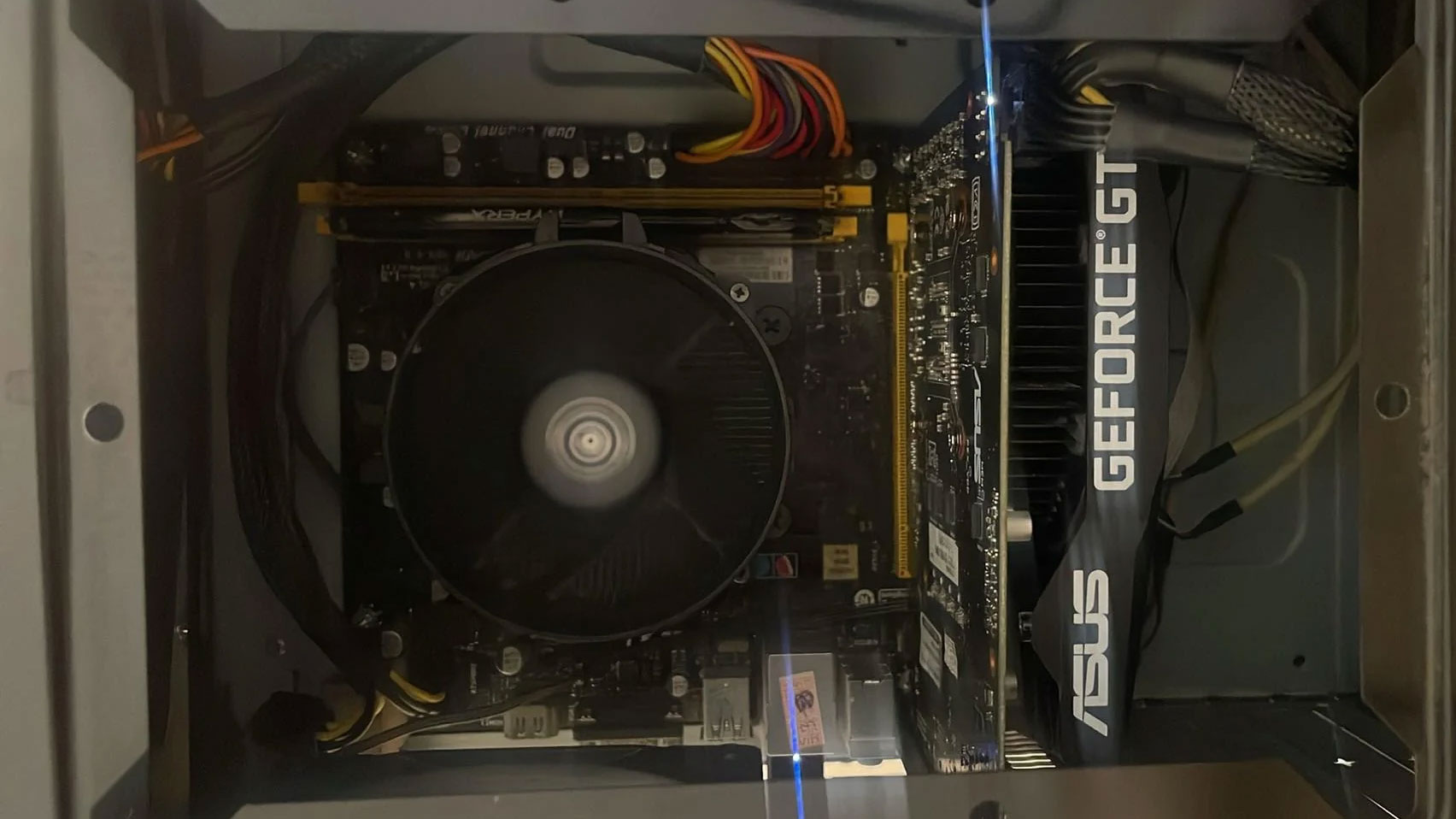Motherboard dies after marathon 100-hour BIOS update process, vigil attended by thousands online
The end came as the ‘monitor lost signal,’ then the system became ‘completely unresponsive.’

The Redditor who had thousands of PC-DIY enthusiasts on tenterhooks with posts charting their extraordinarily long BIOS update odyssey (100 hours+) had some sad news to share today. GoatWithAGun posted a defeated “Welp, we’re done here,” and shared a picture of their famous-for-15-minutes PC, which was described as “completely unresponsive” after the monitor seemingly lost signal from the machine.
Welp, we’re done here from r/pcmasterrace
In the above post, which serves as both an obituary and epitaph for the deceased PC, GoatWithAGun sensitively told those gathered around this virtual deathbed “As of 2:14 PM Philippine Standard Time, my monitor lost signal from the PC and I returned to it completely unresponsive to any troubleshooting.” The Redditor graciously thanked those who had followed their fight to resuscitate the PC, and those who had donated.
Our previous coverage saw the efforts to update the BIOS of this PC’s BioStar A320MH motherboard extend past the 24-hour mark (flashing 66% complete). Actually, follow-up posts saw the Redditor start new threads at 48-hours+, and 100-hours+ before quiet darkness descended today.

It may be unfortunate what has happened to this PC, which the Redditor said they decided to BIOS-flash due to the lure of BioStar stability fixes. However, it shouldn’t be the end of the system, with replacement motherboards readily available. Other components of this system like the AMD Ryzen 3 1200 CPU, 4GB of DDR4-2400 Kingston HyperX memory, an Asus GTX 1660 GPU, a 128GB Transcend SATA SSD, and a 480GB Crucial SATA SSD are all likely unconcerned with the motherboard’s sticky end.
Before signing off, GoatWithAGun seemed to hint that they may soon have a new way to reanimate the dead BioStar A320MH motherboard. The Redditor said that a BIOS programmer is on the way (with a spare BIOS chip, we would hope). Thus, there may be a chance that this bricked single-BIOS device could rise again – if the BIOS contents are the only hurdle to it being able to boot.
GoatWithAGun will probably announce the result of the BIOS programmer tinkering off of Reddit, due to a segment of the platform the Redditors says have “grown tired of me.” It’s a shame those folks couldn’t just go and read and comment on something else.
Get Tom's Hardware's best news and in-depth reviews, straight to your inbox.

Mark Tyson is a news editor at Tom's Hardware. He enjoys covering the full breadth of PC tech; from business and semiconductor design to products approaching the edge of reason.
-
ezst036 Back in the day I remember reading somewhere a process that I saw once referred to as a "hotflash", that is boot a similar/same motherboard, and with the second motherboard running remove the good BIOS chip and install the failed.Reply
Now flash the chip.
Once the process is complete shut down the board and swap the chips once more so the good chip is un-touched in the good board. Try the re-flashed BIOS back in the motherboard it belonged in and it might work. I never tried this myself seems fairly risky. -
Alvar "Miles" Udell The bigger question is what flavor of Linux they will be using, since those other specs are low to extremely low end, even for the day.Reply -
Konomi Reply
One of their previous posts said they were running Mint and using the hardware as a spare PC for friends to use for printing etc if I remember correctly.Alvar Miles Udell said:The bigger question is what flavor of Linux they will be using, since those other specs are low to extremely low end, even for the day. -
Giroro That mobo is toast, with or without a new bios chip.Reply
I'd guess the flashing was taking so long because it kept trying to verify written data, but couldn't - probably due to some other hardware failure. Maybe bad solder or a bad data trace.
It could be a failure that somehow magically only affects writing to BIOS without affecting read, or at least without completely breaking boot.... Something where a new bios chip might actually revive the system - but is it really with the effort to attempt repair with the risk of the failure causing other problems?
If the point of running the update was for stability improvements, then presumably the board was already noticably unstable. -
zorgan.roman Note that if you are in the BIOS to the motherboard and the CPU, unregulated static voltage flows and the CPU usually runs at its full level. Even on a laptop. This could have caused the death of other components as well. Something couldn't run at full voltage with unused load. A clear failure of EPROM.Reply -
LabRat 891 Bad SPI ROM.Reply
It happens, though fairly rarely unless the user was slamming BIOS mods onto the board.
Had similar happen to a FirePro V3700 I was trying to cross-flash into a HD 3470 GDDR3.
The chip started taking ages to read or write, and eventually only reads or writes garbled data (using a 3.3v CH341a). -
diminishedfifth I don't get it, why was it a "marathon"? Shouldn't a BIOS update take a few minutes?Reply -
atomicWAR Reply
Normally yes but I've seen flashing issues take hours to resolve. I haven't had anything this long personally but yeah things like this can happen. This was just on the extreme end of things.diminishedfifth said:I don't get it, why was it a "marathon"? Shouldn't a BIOS update take a few minutes? -
diminishedfifth Thanks for the response, I was thinking I missed a previous article or it was an inside joke of sorts lolReply